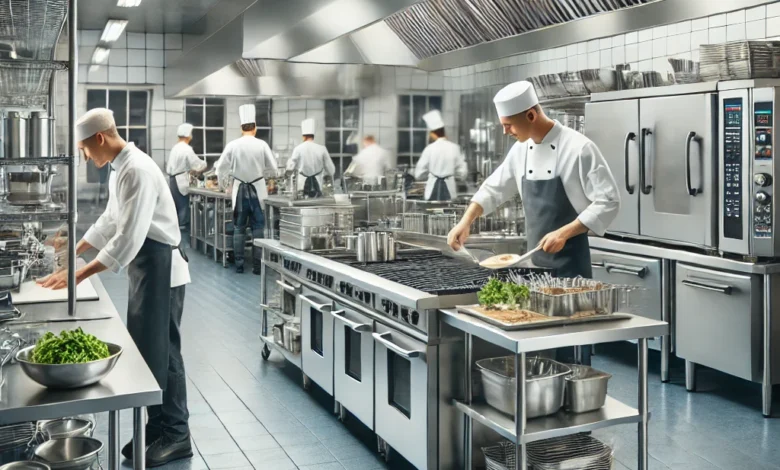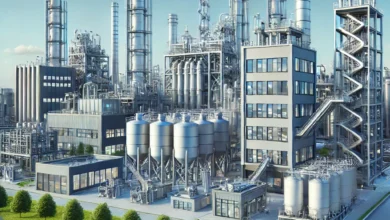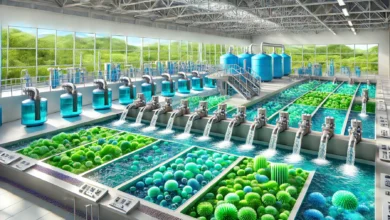Boost Efficiency and Quality: Choosing the Best Commercial Kitchen Equipment for Your Restaurant

In the restaurant industry, efficiency and quality are not merely ideals but essentials for survival and growth. Every dish that reaches the customer and every service you provide rests heavily on the functionality, durability, and adaptability of your kitchen equipment. For restaurant owners and managers, investing in the right equipment is akin to setting the foundation of a building—strong equipment supports both the daily workflow and the long-term vision of the restaurant.
Selecting the best commercial kitchen equipment goes beyond choosing a few ovens and refrigerators; it requires a strategic approach, careful planning, and a clear understanding of both current and future business needs. The right equipment can transform the speed, safety, and consistency of food preparation, leading to better customer experiences, reduced waste, and higher profit margins.
This guide will help you navigate the world of commercial kitchen equipment, from understanding what your restaurant requires to selecting appliances that will support your culinary goals and business efficiency.
Understanding Your Restaurant’s Specific Needs
Before investing in any equipment, it’s essential to evaluate the unique requirements of your restaurant. Consider the type of cuisine you offer, the volume of food you expect to prepare daily, and any specialty items that may require unique equipment. For instance, a pizzeria will have different equipment needs compared to a fine-dining French restaurant.
- Menu Demands: Review your menu to determine specific equipment needs. For example, if you offer a range of grilled items, a high-quality grill is a priority. Likewise, if you make fresh pasta, an industrial-grade pasta maker is essential.
- Kitchen Space: Measure the available space and plan the kitchen layout in a way that maximizes workflow efficiency. Smaller spaces require compact, multifunctional equipment, while larger kitchens can accommodate bigger, specialized units.
- Volume and Speed Requirements: If your restaurant caters to a high number of customers, invest in equipment that can handle large volumes and deliver consistent results under pressure.
Setting a Budget for Kitchen Equipment
Defining a clear budget for your kitchen equipment is crucial. It’s easy to get carried away with top-of-the-line appliances, but balancing quality and affordability can ensure you get the most value for your investment.
- Initial vs. Long-Term Costs: Higher-quality equipment may have a steeper initial cost but can save money over time due to durability and lower maintenance requirements.
- Consider ROI: Prioritize equipment that directly impacts your output, such as high-quality cooking appliances and refrigeration units, since these contribute directly to the quality and safety of your food.
- Flexible Financing Options: Look into leasing options or financing plans if upfront capital is tight, allowing you to access quality equipment without a large initial investment.
Types of Commercial Kitchen Restaurant Equipment
Understanding the key types of commercial kitchen restaurant equipment can help you identify what’s necessary versus what’s optional. In a well-rounded commercial kitchen, you’ll typically find refrigeration units, cooking appliances, food prep tools, and cleaning equipment. Each plays a crucial role in maintaining food quality, safety, and efficiency.
- Refrigeration Units: Essential for food safety and freshness, refrigeration units range from walk-in freezers to compact, under-counter fridges. These units help preserve perishable ingredients, ensuring that dishes are safe and consistent in flavor.
- Cooking Appliances: Includes ovens, grills, ranges, and fryers. The right cooking appliances allow chefs to execute dishes exactly as intended, ensuring flavor and texture are spot-on.
- Food Preparation Tools: Includes items like food processors, blenders, and meat slicers, which help speed up prep work while ensuring precision and consistency.
- Cleaning and Sanitation: Dishwashers, sanitizers, and handwashing stations maintain cleanliness and prevent cross-contamination.
Choosing the Right Cooking Appliances
When selecting cooking appliances, it’s essential to think about the types of food you’ll be preparing, as well as the required cooking methods. Whether it’s an industrial-grade oven for baking, a grill for searing, or a fryer for crisping, the right appliance can make all the difference.
- Ovens: From convection ovens to combi ovens, each type offers distinct advantages. Choose based on your menu needs; for example, a pizzeria may need a stone deck oven, while a bakery may require multiple convection ovens.
- Grills and Fryers: Grills are great for a charred flavor, while fryers offer a fast, crispy result for items like fries or fish. Consider energy-efficient models to reduce utility costs over time.
- Space Considerations: Commercial kitchen space is often limited, so choose compact or multifunctional appliances that can maximize space without sacrificing quality.
Refrigeration and Freezing Needs
Refrigeration is one of the cornerstones of any commercial kitchen, essential for preserving ingredients and maintaining freshness.
- Walk-In Refrigerators: Ideal for larger kitchens, walk-ins offer ample space for bulk storage and easy access to ingredients. They’re essential for high-volume establishments where freshness and accessibility are key.
- Reach-In Refrigerators: Suitable for smaller kitchens, reach-ins allow quick access to frequently used ingredients without taking up too much space.
- Freezers: Freezers are critical for long-term storage, particularly if you serve dishes that require a stable supply of ingredients. Opt for energy-efficient models to reduce operating costs.
Efficient Food Preparation Tools
Food prep tools are invaluable in a busy kitchen environment. They help ensure dishes are prepared quickly, consistently, and safely.
- Food Processors: Used for chopping, slicing, and dicing, food processors can handle large quantities quickly, ensuring uniformity across dishes.
- Mixers: Stand mixers are essential for tasks like mixing dough or batter. In bakeries or pizza restaurants, heavy-duty mixers are crucial to maintain consistency and speed.
- Slicers and Blenders: Slicers help with tasks like thinly slicing meats or cheeses, while blenders are ideal for soups, sauces, and smoothies.
Investing in High-Quality Storage Solutions
Proper storage is critical for any kitchen, ensuring ingredients are organized, accessible, and safe. From shelving to storage containers, choose options that maximize space and allow quick access.
- Shelving Systems: Stainless steel shelves are popular in commercial kitchens due to their durability and ease of cleaning. Adjustable shelves can also be customized to suit different storage needs.
- Food-Safe Storage Containers: Use clear, labeled containers to store prepared ingredients and reduce spoilage. Stackable designs save space and simplify organization.
- Cold Storage Bins: For items like ice or pre-prepared foods that require quick access, cold storage bins provide a convenient solution.
Dishwashing and Sanitation Equipment
A clean kitchen is a safe kitchen. Investing in reliable sanitation equipment ensures that your restaurant meets health codes and reduces the risk of contamination.
- Commercial Dishwashers: Essential for high-volume cleaning, commercial dishwashers sanitize quickly and efficiently. Choose between conveyor, under-counter, or door-type options based on your space and volume needs.
- Sanitizers: Beyond dishwashing, areas like food prep surfaces also need regular sanitizing. Automatic sanitizers help maintain hygiene without requiring manual labor.
- Handwashing Stations: Dedicated handwashing stations prevent cross-contamination and improve overall cleanliness.
Easy Equipment provides high-quality commercial kitchen restaurant equipment to help streamline your food service operations—explore the full selection at https://www.easyequipment.com/.
Considering Energy Efficiency and Sustainability
Modern restaurant operations benefit from energy-efficient and eco-friendly appliances. Not only can they reduce utility bills, but they also align with a growing customer demand for environmentally responsible practices.
- Energy Star-Rated Equipment: Energy Star-rated appliances consume less electricity without sacrificing performance, leading to long-term savings.
- Eco-Friendly Cooking Methods: Induction cooking, for instance, uses magnetic fields to heat pans directly, offering a safer, more energy-efficient option compared to traditional gas burners.
- Sustainable Materials: Look for appliances made with recyclable materials or equipment designed for minimal environmental impact.
Prioritizing Safety in Equipment Selection
Safety is paramount in any commercial kitchen. Choosing equipment with integrated safety features protects your staff and reduces liability risks.
- Temperature Controls: Equipment with precise temperature controls minimizes the risk of burns and food spoilage.
- Automatic Shutoff: Appliances with automatic shutoff features can prevent fires and reduce energy waste.
- Ergonomic Designs: Ergonomically designed tools reduce strain and help staff maintain productivity without risking injury.
Optimizing Kitchen Layout for Efficiency
An efficient kitchen layout is critical to maintaining smooth workflow and minimizing bottlenecks. A well-thought-out kitchen design can dramatically improve how quickly dishes move from the stove to the table, helping you serve more customers efficiently and with fewer errors.
- Work Zones: Divide your kitchen into zones based on tasks—such as preparation, cooking, plating, and cleaning. This setup minimizes movement and allows each station to operate independently, reducing cross-traffic and the risk of collisions.
- Accessible Storage: Place frequently used items within arm’s reach of each workstation. For example, prep tools should be near the prep area, and ingredients should be close to cooking stations.
- Streamlined Pathways: Arrange appliances, prep areas, and storage units to facilitate easy movement. Creating clear, direct paths between work zones prevents staff from wasting time navigating around each other.
Maintenance and Longevity of Kitchen Equipment
High-quality equipment can last years if properly maintained, providing a valuable return on investment and helping maintain consistent food quality. Regular maintenance is key to avoiding breakdowns, reducing downtime, and extending equipment life.
- Routine Cleaning: Develop a daily and weekly cleaning routine for each piece of equipment. Routine cleaning prevents food buildup, which can cause corrosion or contamination.
- Regular Inspections: Schedule periodic inspections by a technician to catch minor issues before they escalate into costly repairs. Regular checks on parts like thermostats, burners, and seals ensure everything functions efficiently.
- Manufacturer Warranties: Many pieces of commercial equipment come with warranties that cover repairs and maintenance for a certain period. Make sure to understand warranty coverage and keep all necessary documents handy.
Training Staff on Equipment Usage
Your staff must be well-trained to use and maintain the equipment effectively. Proper training ensures not only that equipment is used safely but also that it lasts longer.
- Comprehensive Training: Conduct thorough training sessions for each piece of equipment, covering safe use, maintenance, and cleaning. New hires should receive training to familiarize them with equipment-specific protocols.
- Safety Practices: Emphasize safety practices, such as wearing appropriate PPE (personal protective equipment) and following safe lifting techniques. Safety in equipment handling reduces the risk of injury and equipment damage.
- Ongoing Support: Offer refresher courses or quick reference guides near equipment to reinforce best practices. This can be especially helpful in fast-paced environments where new staff may frequently join the team.
Conclusion
Selecting the right commercial kitchen equipment is one of the most impactful decisions you can make for your restaurant. With the right choices, you’ll enhance kitchen efficiency, elevate food quality, and provide a consistent, enjoyable experience for your guests. From refrigeration units to cooking appliances and food prep tools, every piece plays an integral role in your restaurant’s success.
With a strategic approach to equipment selection and a focus on maintenance, safety, and staff training, your kitchen can operate like a well-oiled machine. Investing in high-quality, energy-efficient equipment not only benefits your restaurant’s bottom line but also supports sustainable practices that resonate with today’s eco-conscious diners.
Whether you’re setting up a new restaurant or upgrading an existing kitchen, prioritize equipment that aligns with your culinary goals and operational needs. In doing so, you’ll create a foundation for success, allowing your team to focus on what they do best—serving delicious food that keeps customers coming back.



